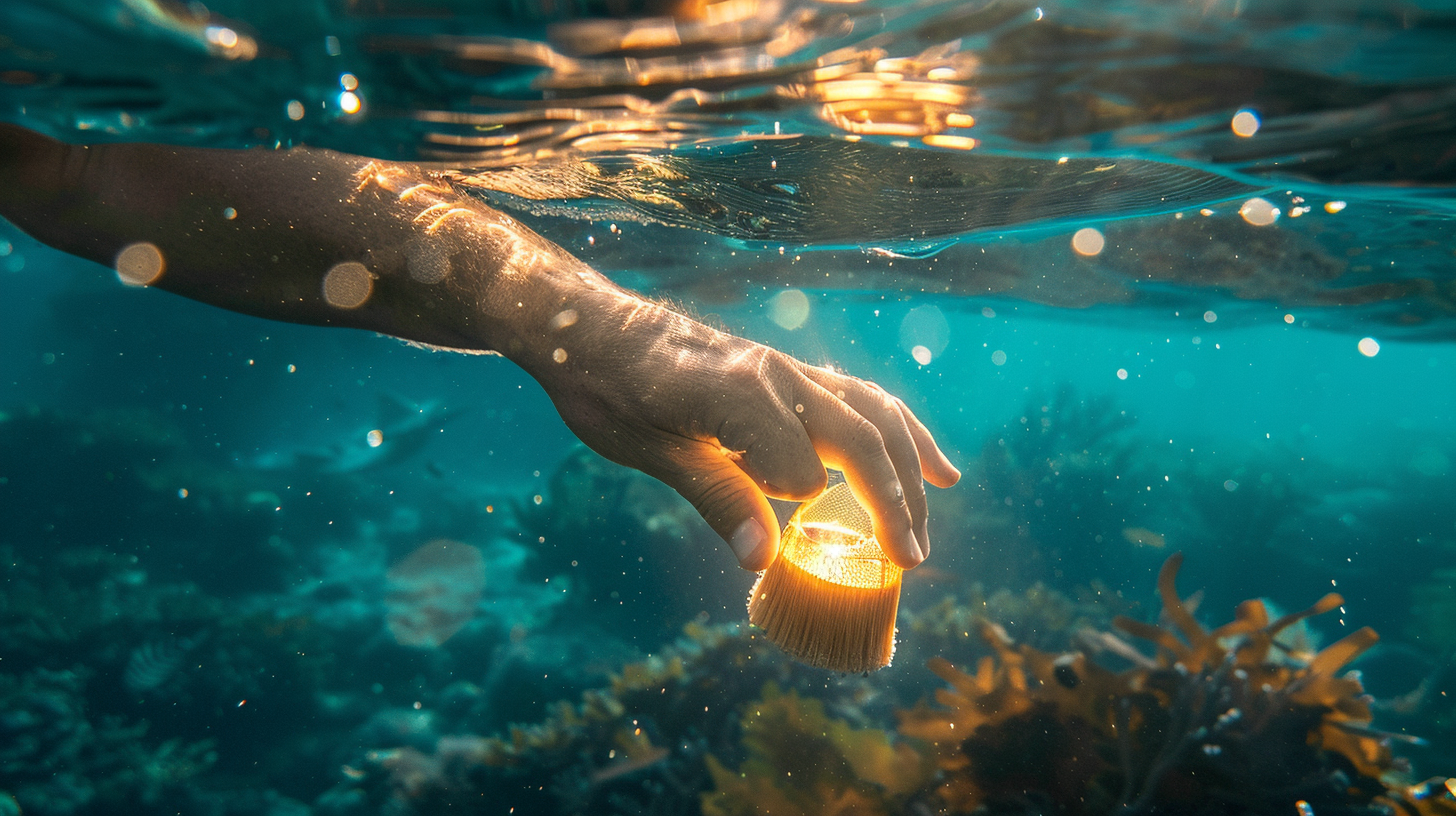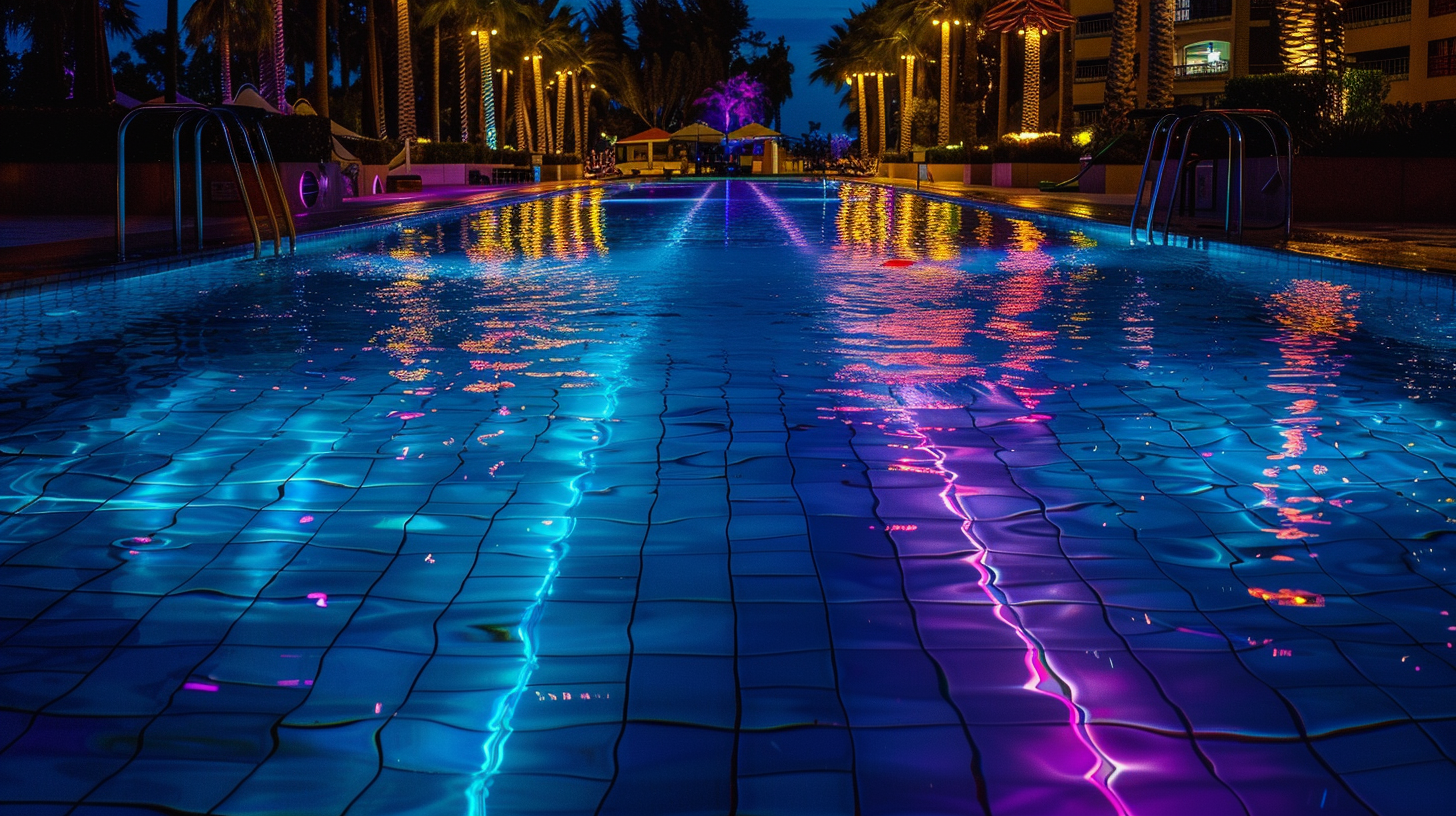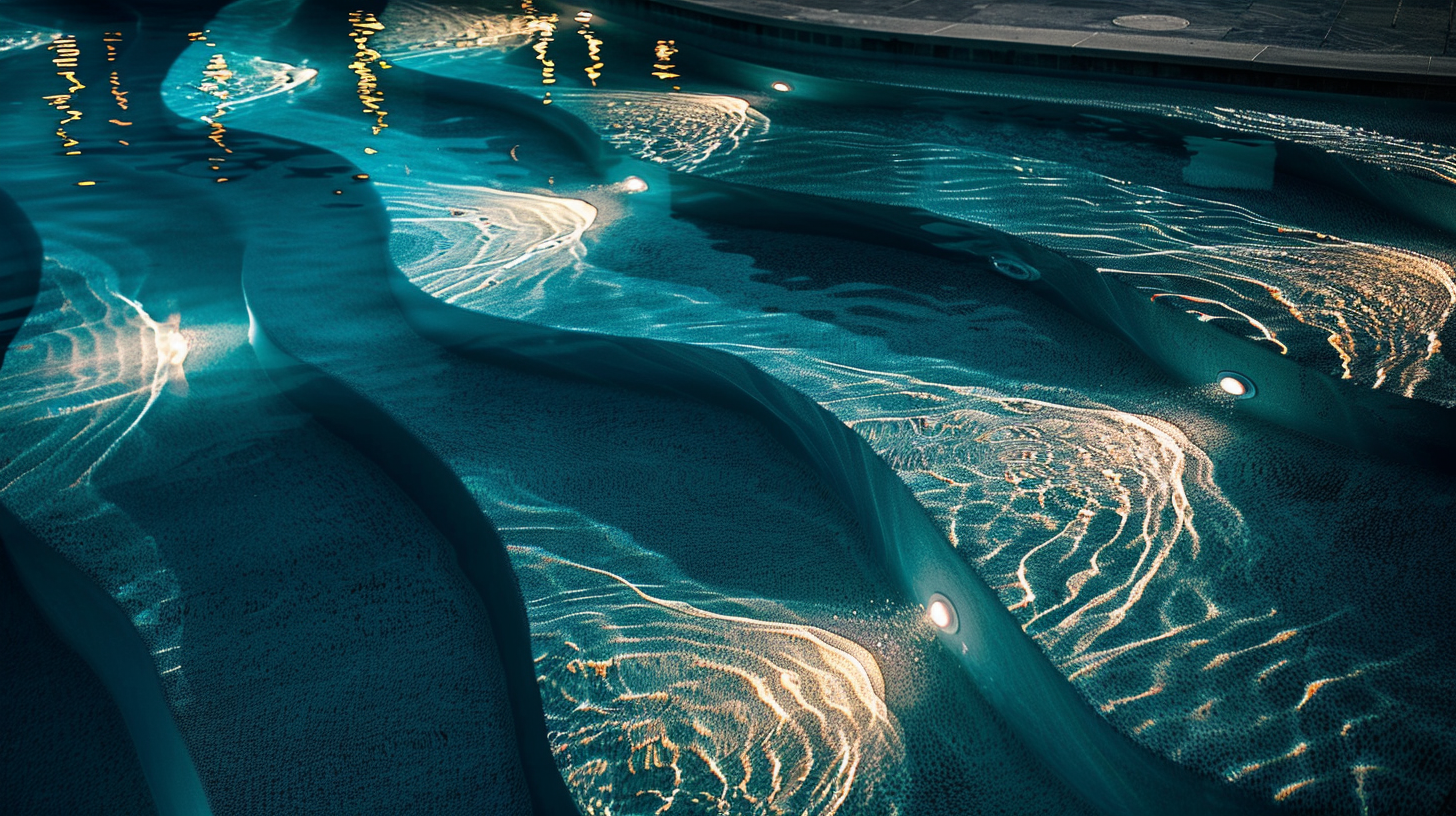How to maintain and clean underwater boat lights
Ensuring the regular maintenance of your underboat lights is more crucial than you might realize. These fixtures not only embellish your vessel with a captivating glow, but they also play an instrumental role in night navigation and underwater visibility. When properly maintained, these lights can significantly reduce the risk of accidents, enhance your boat upkeep, and ensure that your underwater excursions remain safe and enjoyable.
Dirt, algae, and marine growth can quickly accumulate on your underwater lights, diminishing their brightness and efficiency. This is why routine cleaning is indispensable. By neglecting this upkeep, you run the risk of allowing these contaminants to solidify, creating a stubborn layer that reduces the light’s output and can eventually lead to permanent damage.
It’s not just about aesthetics, either. If your boat’s underwater lights are foggy or dim, it can be difficult to see underwater obstacles, which could lead to costly damage to your vessel or even a life-threatening situation. Therefore, a proactive approach towards the maintenance and cleaning of your underwater lights is a small but pivotal step towards ensuring the longevity and performance of your boat.
Recommended cleaning materials and tools
When it comes to maintaining and cleaning your underwater boat lights, having the right materials is just as crucial as the method itself. First and foremost, you’ll want a soft-bristled brush; this is gentler on the light’s surface yet effective in removing accumulated grime, algae, and other marine growth. A non-abrasive sponge is another excellent tool for delicate scrubbing without risking scratches or damage to the lights.
For cleaning solutions, opt for a mild, marine-safe cleaner. Regular household cleaners can contain harsh chemicals that may not be suitable for use in aquatic environments. Look for products specifically designed for marine equipment, as these are formulated to be both effective at cleaning and safe for the underwater ecosystem. Additionally, a vinegar-water solution can serve as an eco-friendly alternative, capable of dissolving mineral deposits and marine growth.
It’s also a good idea to have a bucket of clean, fresh water on hand. Since saltwater can leave deposits and residues, a final rinse with freshwater ensures that all cleaning agents and salt are completely removed, which helps maintain the integrity of the lights. A microfiber cloth is a perfect choice for drying the lights after rinsing, as it prevents water spots and streaks.
Don’t forget to equip yourself with a set of rubber gloves. Not only do they provide a better grip while handling slippery cleaning tools and solutions, but they also protect your hands from any potentially irritating substances. For stubborn spots, a plastic scraper can be incredibly useful. Just be sure it’s made of a soft material that won’t scratch the lights’ surface.
Lastly, if you’re dealing with barnacles or other hard marine growth, a specialized scraper or a hull cleaning tool might be necessary. These tools can help remove tough deposits without damaging the lights. Remember to always follow the manufacturer’s instructions when using any cleaning product or tool to ensure that you don’t inadvertently void any warranties or cause harm to your underwater lights.
Having these materials and tools at your disposal not only makes the cleaning process more straightforward but also ensures that your underwater lights remain in top-notch condition. This investment in proper upkeep tools will go a long way in preserving the longevity and effectiveness of your lighting system, making those nighttime aquatic adventures both safer and more enjoyable.
Step-by-step cleaning process
The first step in cleaning your underwater boat lights is to ensure that your boat is docked in a safe and stable location. Once you’re securely moored, switch off the power supply to the underwater lights. This is a critical safety measure to avoid any electrical hazards while you’re working.
Next, don your rubber gloves and prepare your cleaning area by organizing all the necessary materials and tools within easy reach. Fill a bucket with clean, fresh water and add an appropriate amount of marine-safe cleaner. If you’re using a vinegar-water solution, mix equal parts vinegar and water in the bucket. Grab your soft-bristled brush and non-abrasive sponge, and you’re ready to get started.
Submerge the brush or sponge in the cleaning solution and gently scrub the surface of each light. Focus on areas where dirt, algae, and marine growth are most evident. Be mindful not to scrub too vigorously, as harsh cleaning can scratch or damage the light lenses. If you encounter stubborn grime or barnacles, carefully use a plastic scraper, making sure it’s a soft material that won’t cause scratches. For resistant mineral deposits, allow the vinegar solution to sit on the surface for a few minutes before scrubbing.
After scrubbing each light, rinse off the cleaning solution thoroughly with fresh water. It’s essential to remove all traces of cleaner and salt to prevent any residue from forming on the lights. Use a bucket of clean water or a hose if accessible, ensuring complete and thorough rinsing.
Once rinsed, dry the underwater lights using a microfiber cloth. This step helps to prevent water spots and streaks, ensuring your lights are not only clean but also visually clear. Inspect each light closely during this process to ensure all grime has been removed and look for any signs of damage or wear that may need addressing.
If you discover minor scratches or cloudiness on the light lenses, you can use a mild polishing compound designed for marine use to restore their clarity. Apply a small amount of the compound to a clean microfiber cloth and gently polish the lens in a circular motion. Rinse off any residue and dry the lights once more.
After completing the cleaning and drying process, perform a quick operational check before heading out to sea. Reconnect the power supply and turn on the underwater lights to ensure they are functioning correctly. If any lights appear dim or non-operational, you may need to investigate further or replace faulty components.
By following these straightforward steps, you’ll ensure that your underwater boat lights remain in peak condition, contributing to better visibility, enhanced boat upkeep, and overall safety during nighttime marine excursions. Consistent and careful maintenance will prolong the life of your underwater lighting system, making every voyage under the stars a safer and more enjoyable experience.
Common issues and troubleshooting tips
Maintaining your underwater boat lights is essential for optimal performance and safety. However, even with regular upkeep, you may encounter common issues that can affect the functionality of these lights. Understanding these problems and knowing how to troubleshoot them can save you time and prevent any potential damage to your boat.
One frequent issue is the accumulation of algae and marine growth. Over time, this can create a thick layer on the light’s surface, diminishing its brightness. While regular cleaning can usually manage this, persistent growth might indicate that your lights are left submerged in water for extended periods without use. If you notice significant build-up shortly after cleaning, consider using anti-fouling coatings specifically designed for underwater lights. These coatings help in reducing marine growth, ensuring your lights stay cleaner for longer periods.
Another common problem is the fogging or cloudiness of the light lenses. This often results from scratches or improper cleaning techniques. When using scrapers or cloths, always choose non-abrasive materials to minimize the risk of scratching. If your lenses are already foggy, a marine-safe polishing compound can help restore clarity. Apply a small amount onto a soft cloth and gently polish the lens.
Electrical issues can cause lights to flicker or stop working altogether. Corrosion of the wiring and connectors due to their exposure to water and salt is a typical cause. Regular inspections of your electrical connections and applying a marine-grade corrosion inhibitor can prolong the life of these components. If you experience flickering lights, check all connections for corrosion and ensure they are secure. Sometimes, the issue might be with the power source itself, so confirm that your boat’s electrical system is functioning correctly.
Here’s a quick troubleshooting table you can refer to when encountering these issues:
| Issue | Possible Cause | Solution |
|---|---|---|
| Dim or reduced brightness | Algae or marine growth accumulation | Regular cleaning and use of anti-fouling coatings |
| Foggy or cloudy lenses | Scratches or improper cleaning | Use non-abrasive cleaning materials; apply a polishing compound to restore clarity |
| Flickering or non-operational lights | Corroded wiring or poor electrical connections | Inspect and clean all connections; apply a marine-grade corrosion inhibitor |
Leaking seals can be another problem, leading to water ingress, which can damage the internal components of your lights. Regularly inspect the seals around each light for wear and tear. If you notice any damage, replace the seals immediately to prevent further issues. Using high-quality, waterproof marine sealants can enhance the longevity of the seals.
Overheating is another issue that you might encounter, particularly with high-intensity lights. Underwater lights are designed to operate while submerged, as the water helps dissipate heat. Running the lights out of water for extended periods can cause overheating and damage. To avoid this, only operate your underwater lights when they are fully submerged, and if you notice any overheating signs, turn off the lights immediately and allow them to cool down before further use.
By being aware of these common issues and applying the appropriate troubleshooting techniques, you can ensure that your underwater boat lights perform optimally and contribute to the overall safety and enjoyment of your boating experiences. Regular maintenance and timely interventions will not only enhance the efficiency of your underwater lights but also extend their lifespan, adding value to your boat upkeep efforts.
Safety precautions and best practices
When it comes to safeguarding your investment in underwater boat lights, safety should always be the foremost concern. The first essential precaution is to power off all electrical systems connected to the underwater lighting. Working with electrical components while wet is risky and can lead to severe injuries or even fatalities. Always ensure the boat is properly docked, and there’s no power running to the lights before you start any cleaning or maintenance activities.
Wearing the appropriate personal protective equipment is another critical safety measure. Rubber gloves will not only protect your skin from harsh cleaning agents but also provide a better grip while you’re scrubbing and handling tools. Safety goggles are advisable to prevent any cleaning solutions from splashing into your eyes, and a long-sleeved shirt can protect your arms from nicks and scrapes.
It’s imperative to avoid using any abrasive materials or harsh chemical cleaners on your underwater lights. Such substances can damage the lenses and housings, leading to compromised performance and potential safety hazards. Stick to non-abrasive, eco-friendly cleaning solutions that are designed for marine use to ensure that both your lights and the surrounding aquatic environment remain unharmed.
When handling stubborn barnacles or marine growth, the tendency might be to apply significant force, but this can actually be counterproductive. Overly aggressive scrubbing or scraping can damage the light fixtures or seals, potentially leading to leaks and electrical issues later on. Instead, use gentle, persistent effort and soak particularly tough spots with your chosen cleaning solution to soften them before attempting to remove them.
Frequent inspections of the lights and their mounting hardware are essential to catch any wear and tear before it becomes a bigger problem. Look for signs of corrosion, cracks, or loose connections. Any damaged components should be replaced immediately to ensure the lights’ effectiveness and safety. It’s also a good practice to regularly check the seals around the lights to ensure they are intact and watertight.
Proper storage of your cleaning materials and tools can also contribute to your overall safety. Keep all cleaning agents in their original, labeled containers and store them in a cool, dry place out of direct sunlight. This practice reduces the risk of accidental spills and harmful chemical reactions. Additionally, keep your cleaning tools organized and in good condition to minimize the chance of injuries from rusty or broken equipment.
Finally, always be mindful of the environment while conducting maintenance and cleaning activities. Make sure that any cleaning solutions or debris are disposed of in an environmentally responsible way. Avoid letting chemicals or marine growth fragments enter the water, as these can harm marine life and disrupt the ecosystem.
By adhering to these safety precautions and best practices, you not only ensure the longevity and optimal performance of your underwater boat lights but also safeguard your well-being. Taking these preventive measures allows you to enjoy the enhanced visibility and added ambiance of well-maintained underwater lighting, all while keeping safety at the forefront of your boat upkeep routine.


